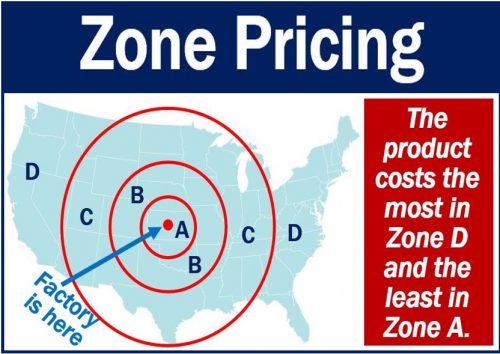Zone pricing is the process of establishing prices for products and services depending on where people buy them. If a consumer buys something in Zone A and then the same thing in Zone B, they may have to pay different prices.
A company may use a zone pricing system to pay for transportation costs. In other words, something may cost more the further away it is from where it was made.
Freight charges
If sellers pay the freight charges, they will want to recover that cost. Therefore, they charge customers that are far away more than the ones that are near.
BusinessDictionary.com says the following regarding zone pricing:
“In using a zone pricing strategy, a company typically keeps its prices to distributors consistent within a particular zone but will usually raise its prices within zones that are further away from its manufacturing facilities to help account for higher transport costs.”

Zone pricing – example
Let’s imagine an office furniture manufacturer in Mexico ships its products into the USA.
It might divide its next door neighbor into four zones. It bills customers in different zones different amounts.
Therefore, a customer in Texas probably pays less than one in New England.
Regarding the advantages to using this type of pricing, MarketingBinder.com says:
“Zone pricing helps reduce the variation in delivered prices that result from F.O.B. shipping pricing. It also simplifies freight transportation charges.”
Concentric circles or irregular shapes
The company that adopts a zone pricing system may draw concentric circles on a map. Its manufacturing plant or warehouse is at the center. Each circle defines the boundary of a price zone.
Some companies, on the other hand, may use irregularly-shaped price boundaries. Geographical areas have different population densities, transportation infrastructure, and freight costs.
Zone prices – market forces
The term may also refer to the practice of establishing prices that reflect local competitive conditions. In other words, those that reflect market forces.
The term ‘market forces‘ refers to the forces of supply and demand.
According to Wikipedia:
“Zone pricing, as practiced in the gasoline industry in the United States, is the pricing of gasoline based on a complex and secret weighting of factors, such as the number of competing stations, number of vehicles, average traffic flow, population density, and geographic characteristics.”
